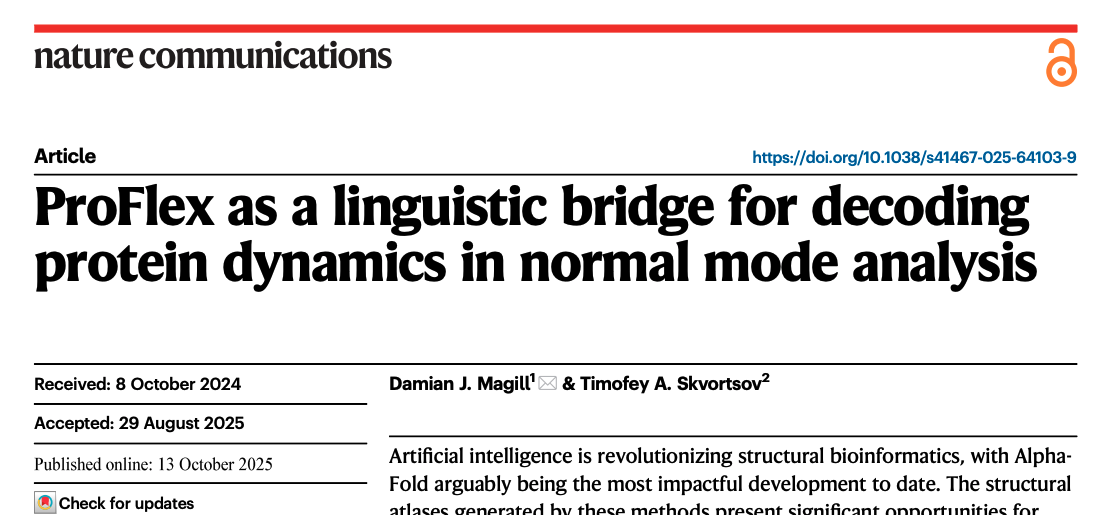School of Pharmacy Researcher Develops Breakthrough Protein Analysis Tool
Dr Timofey Skvortsov from the School of Pharmacy at Queen’s, along with his collaborator, has published groundbreaking work in Nature Communications, introducing ProFlex - a revolutionary computational tool that decodes protein flexibility patterns.

Dr Skvortsov, a lecturer at the School of Pharmacy, collaborated with colleague Damian Magill to develop this innovative approach that transforms how scientists analyse protein behaviour. Unlike traditional methods that focus on static protein sequences and structures, ProFlex reveals the dynamic flexibility characteristics that govern how proteins actually function.
The research team subjected over 500,000 AlphaFold protein structures to normal mode analysis, creating what they describe as a protein "alphabet" that converts complex flexibility patterns into easily comparable sequences. This breakthrough adds a crucial new dimension to protein analysis, making large-scale protein dynamics searchable, compressible, and comparable for the first time.
Speaking of the breakthrough development, Dr Skvortsov commented:
"The information encoded in protein sequences and structures is static in the sense that it doesn't tell us much about protein behaviour and dynamics - how flexible or inflexible a protein is. Our approach addresses this gap by providing researchers with tools to understand the dynamic aspects of protein function."
The practical applications of ProFlex extend beyond basic research. The team demonstrated its potential for phylogenetic reconstructions, particularly when combined with structural information. They successfully analysed 15 major capsid protein sequences from highly diverse Tevenvirinae phages, which are typically challenging to classify using conventional methods.
By comparing similarity matrices based on amino acid sequences, secondary structure alphabets, and the new ProFlex alphabet, the researchers showed that their approach detects underlying evolutionary relationships whilst providing complementary information about protein function that other methods miss.
The research has immediate practical implications for the scientific community. The team has developed a comprehensive suite of tools that allows researchers to integrate ProFlex into their existing workflows. Available as importable modules alongside a pre-compiled version of the SWISS-PROT dataset, these tools enable scientists to convert protein structures into ProFlex format, search for proteins with similar flexibility patterns, and compare ProFlex-encoded sequences.
This accessibility ensures that laboratories worldwide can immediately begin leveraging the technology to enhance their protein research. The tools are designed to facilitate new insights into protein function whilst making better use of the rapidly expanding structural atlas of known proteins.
Commenting on the work, Professor Gavin Andrews, Head of the School of Pharmacy at Queen's stated:
"This exceptional work by Dr Skvortsov and his colleague represents exactly the kind of innovative, interdisciplinary research that defines our School's contribution to advancing pharmaceutical sciences. By bridging biotechnology and bioinformatics, they've created a tool that will benefit researchers globally whilst reinforcing Queen's position at the forefront of computational biology and drug discovery research."
The publication in Nature Communications, one of the world's most prestigious scientific journals, underscores the significance of this advancement in computational biology and its potential impact on pharmaceutical research and drug development.
Media
For media enquiries, please contact Grace White at Queen’s Communications Office via email.
